How to Record a Podcast in 2026
Plan your episode and record somewhere quiet with a decent mic and headphones to keep the audio clean. Record in Audacity or GarageBand, then edit for clarity, consistent volume, and less background noise. Export an MP3 and publish through a podcast
New to podcasting or looking to improve your setup? In both cases, the quality of your podcast recording plays a key role in keeping listeners engaged. In fact, podcasts have even been shown to support learning and attention when the listening experience is clear and well-structured.
At our podcast recording studio in London, TYX supports creators across all stages of podcast production and audio production. From solo podcasters to full teams, we help record high quality audio in studio-grade environments and remote setups.
This blog post covers everything you need to know about how to record a podcast, from planning and equipment to editing and publishing. Whether you’re making brand podcasts or launching a new series, the steps below will help you build a reliable workflow. Our aim is to help you achieve excellent audio quality and start recording with confidence.
Why planning matters
Before you start recording, get clear on your direction. This early work is a major part of strong podcast production, because it reduces re-takes and heavy edits later. Planning saves time, sharpens your message, and helps you record high-quality audio that keeps listeners coming back. Put simply, it gives your podcast strategy a clear structure from episode one.
Start with a purpose
What’s your podcast really about? Are you sharing stories, building a brand, or solving problems for your listeners? Lock this down early. If you’re building brand podcasts, define the brand essence you want listeners to remember after every episode. A clear goal will guide every episode and give your recordings focus.
Think about your target audience
Who are you talking to? Beginners? Fans? Industry peers? The more specific, the better. Knowing your target audience helps shape your tone, structure, and podcast format so you sound relevant from the first minute.
Pick a strong topic
What do they care about right now? What questions are they asking? Choose topics that meet real needs and match your expertise. Keep a running list of episode ideas that align with your niche and deliver practical value.
Sketch a loose structure
You don’t need a script, but you do need a plan. Bullet points, segment ideas, or must-mention tips can stop you drifting mid-episode. It keeps the edit clean and your message on track.
Create your episode outline
Now that you’ve got your topic and audience in mind, sketch a rough plan for how each podcast episode will flow. This helps you stay organised while keeping the energy and pacing right.
Open strong
Start each episode with a clear hook. Welcome listeners, introduce the topic, and let them know what they’ll learn or gain by sticking around. You’ve got seconds to earn their attention.
Break it down
Split your episode into clear segments. These might include:
- A quick recap or follow-up from a previous episode
- The main discussion or story
- A guest interview or co- host segment
- Listener questions or updates
- A short break with music or a sponsor message
This structure helps your audience follow along and makes editing smoother later.
Plan your transitions
Smooth transitions between sections can make a big difference to your podcast’s sound quality. Use music, voice cues, or a short phrase to guide listeners from one part to the next without breaking the flow. This is simple sound design, and it can make your show feel more polished without adding complexity.
End with impact
Close with a clear summary and call to action. Prompt listeners to follow, subscribe, or share the episode. Mention your next topic if possible to build anticipation.
Script or notes?
Some podcasters use full scripts to stay precise. Others just jot down bullet points to keep things natural. Test both approaches and find what helps you record audio with confidence and clarity.
What equipment do you need to record a podcast?
You don’t need a full studio to sound professional, but you do need the right gear. Here’s what matters most:
Microphone
Your podcast mic will shape how your voice sounds more than anything else. Getting this right is a cornerstone of audio production, and it pays off throughout the rest of your workflow. A USB mic is ideal for beginners: just plug in and start recording.
If you want more control and cleaner signal paths, pair an XLR mic with an audio interface. Many podcasters also use dynamic mics, which are less sensitive than condensers and better at rejecting background noise. With the right setup, all of these options can deliver studio-quality sound for your show. It’s also one of the fastest ways to level up your podcast production without changing your format.
Recommended podcast mics:
Audio interface
As we said above, if you're using an XLR mic, you'll need this to convert your signal. An audio interface helps reduce noise, gives you clean gain control, and makes your audio recordings sound more natural. For most podcast setups, a USB interface is fine.
Headphones
Skip the wireless ones. Wired headphones let you monitor your levels in real time and catch issues like background noise or audio bleed before they ruin your recording.
Recommended podcast headphones
- Audio-Technica ATH‑M50x (closed-back wired): Around £90–£130. Accurate studio sound with great isolation and a durable foldable design.
- Sony MDR‑7506 (closed-back wired): Typically £85–£100. Lightweight, trusted by professionals for clean, flat sound and long-session comfort.
- Sennheiser HD 280 Pro (closed-back wired): Roughly £70–£90. Strong passive noise isolation, ideal for catching background noise during recording.
Essential add-ons
Boom arms keep your mic stable. Pop filters soften harsh consonants. A solid stand avoids desk bumps. Small upgrades like these help maintain consistent sound quality from one episode to the next.
For multiple hosts or guests
If you're recording with a co-host or guest in the same room, make sure you have multiple microphones and a setup that captures each voice on a separate audio track. This gives you more flexibility when editing and helps avoid overlapping sounds.
Portable options
Planning to record remotely or on the move? A portable recorder gives you reliable, high quality audio without the need for a full rig.
How much does it cost to start a podcast on a budget?
You don’t need to spend a fortune. The table below outlines what you could be expected to pay for key gear:
Total cost estimate:
- USB-based setup (no interface): ~£120 to £250
- XLR-based setup (with interface): ~£200 to £400
Set up your recording environment for success
.png)
Creating the right space to record a podcast matters more than most people realise. A well-prepared environment boosts sound quality, cuts editing time, and gives you more control over your audio production.
1) Choose a quiet location
Avoid large echoey rooms, traffic-heavy streets, or places with constant electronic noise. Even if you’re using a podcast microphone or a high-end interface, background noise will still creep in if the room isn’t right.
2) Treat the room with simple DIY fixes
You don’t need to rent a professional studio. With a bit of DIY effort, you can treat a home space. Use soft furnishings, curtains, rugs, or even cushions to absorb reflections and reduce audio bleed. These make a noticeable difference when recording podcasts in untreated rooms.
3) If you’re recording in-person, reduce mic overlap
If you’re in the same room with a co-host or guest:
- Use separate mics
- Give each speaker enough space
- Check levels to prevent cross-talk
- Add pop filters
- Use adjustable boom arms for consistent positioning
4) If you’re recording remotely, use the right tools
Skip basic video call tools and use remote recording software designed for podcasters. These platforms can record separate tracks and preserve audio quality without compression. Make sure you and your guests have a strong internet connection and wear wired headphones to avoid echo.
5) Always do a quick test recording
A five-minute test recording will reveal ambient noise, mic issues, or awkward room reflections before you start recording for real.
How to choose podcast recording software
You’ve got your mic, interface, and a quiet space. Now it’s time to choose the software that will actually capture your audio and help you shape it into a polished episode.
There are three main options:
1. Digital Audio Workstations (DAWs)
These are pro-level tools like Audacity, Adobe Audition, GarageBand, or Reaper. DAWs have comprehensive editing tools, giving you full control over audio, multitrack mixing, and effects.
If you want to create a refined sound and manage separate audio tracks, this is the way to go. Audacity is a popular free tool for beginners, while Adobe and Logic cater more to advanced users.
2. Remote recording software
If your co host or podcast guests are in different locations, you'll need reliable remote recording software. Platforms like Riverside.fm, SquadCast, and Zencastr allow you to record high-quality audio locally on each end, even if your internet connection drops. Look for platforms that offer separate tracks and video podcast features if that’s your goal.let you record high-quality audio locally on both ends
3. All-in-one podcast software
Some tools combine recording, editing, and publishing on a single platform. Alitu is one such option, offering simplicity for podcasters who want to focus on content creation rather than technical setup.
Not all tools are equal. Avoid standard video conferencing apps like Zoom or Skype if possible, as they compress your audio and can cause dropouts or latency. For remote interviews, always check whether your chosen platform supports separate audio recording for each speaker.
Your final choice should reflect your podcast format, tech comfort level, and the type of content you're producing. TYX Studios can also help guide you through this process if you're recording a podcast in-studio or remotely.
Recording techniques and best practices
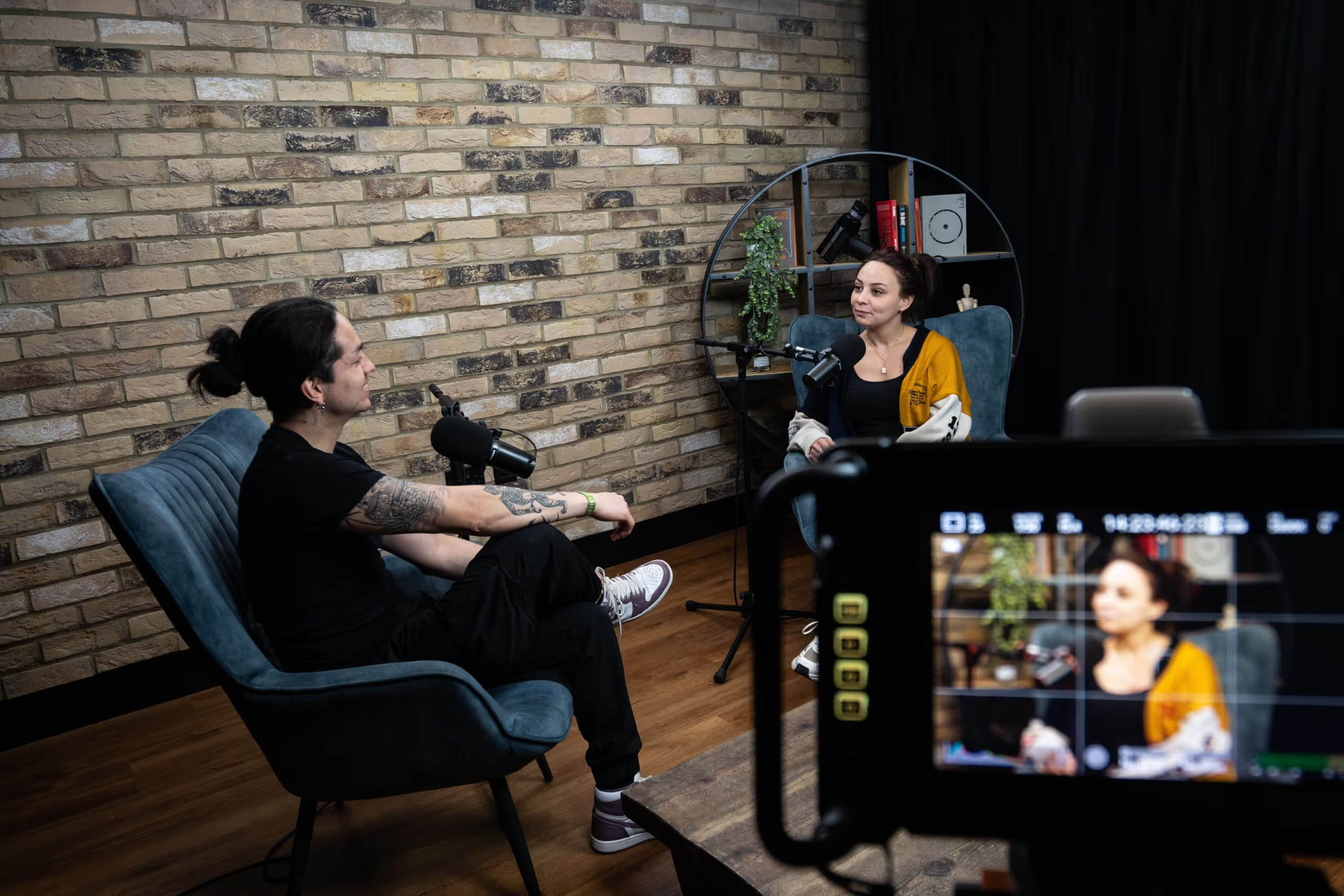
No matter how or where you're recording a podcast, your goal is the same. Capture clear, consistent audio that feels natural and easy to follow.
Before you start
Always run a short test recording. Use wired headphones to check for issues like clipping, background noise, or audio bleed from nearby devices. This gives you a chance to adjust mic placement, input levels, or room acoustics before hitting record for real.
Make sure you’re in a quiet, treated space. Avoid rooms with hard surfaces that cause reverb. If needed, soften your environment with curtains, rugs, or foam panels to reduce echo and ambient noise.
Recording solo
Sit comfortably but close to your mic without touching it. Keep your posture steady to avoid volume changes caused by head movement. Use bullet-point notes or a loose outline to guide you, and pause briefly between sections or ideas. These short gaps will make the edit much cleaner.
Avoid fidgeting, tapping the desk, or shifting your chair during takes. Even subtle noises can be amplified through sensitive mics.
Working with a co host in the same room
Each person should use their own mic. Set up mics at equal distances and angles to avoid volume imbalance. Record separate audio tracks if your setup allows. This makes editing easier and prevents audio bleed between microphones.
Make eye contact or agree on signals to cue who speaks next. This helps you avoid talking over one another and keeps the flow natural.
Pacing, energy, and delivery
Speak clearly at a consistent pace. Use your natural voice but with slightly more energy than usual. This keeps listeners engaged. Smiling while speaking can help your tone sound more inviting.
Pause when switching topics or making key points. It adds rhythm and gives your audience time to process what you’re saying.
File management and backups
Save your recordings as high-resolution audio files, ideally WAV format. Keep at least one backup copy. Create a consistent folder structure with labelled tracks for each episode. If you’re recording multiple takes or segments, name them clearly so nothing gets lost in the edit.
Remote podcast recording: how to do it right
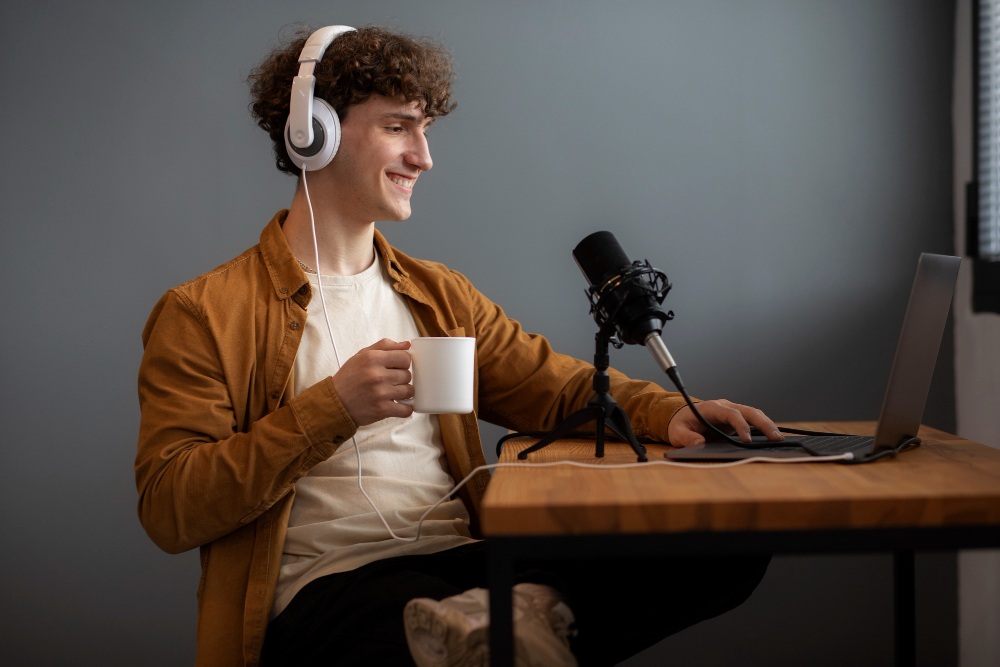
You don’t need to record in the same room as your podcast guests to create a professional podcast. With the right remote recording software and a stable internet connection, you can record remotely and still achieve studio quality results.
Choose a tool that offers separate audio tracks. This ensures cleaner edits and reduces problems like audio bleed or mismatched volumes. Many podcast hosts prefer platforms like Riverside or SquadCast over standard video conferencing tools, as they deliver higher audio quality and better control.
If you're recording a podcast remotely, test everything in advance. Make sure your podcast microphone is set up correctly, check you have a solid internet connection, and confirm your guests have the right gear. Ask them to wear wired headphones and minimise background noise to ensure clear, consistent audio.
Strong preparation makes remote interviews run smoothly and sound polished. It’s entirely possible to run a remote podcast and maintain high production values with the right setup.
Deal with background noise the right way
Background noise can sneak into your recordings even if everything seems quiet. Knowing how to spot and reduce it will make your podcast sound much more professional.
- Electronic noise: This includes hum from lights, laptops, or interfaces. Use quality cables, avoid daisy-chaining power leads, and unplug nearby electronics.
- Environmental noise: Sounds like traffic, fans, or people talking nearby. Use soft furnishings, close windows, and consider some basic sound treatment to absorb reflections. These small choices also support your sound design, because you’re shaping what the room contributes to the final recording.
- Noise reduction tools: Most recording software and DAWs come with plugins to reduce hiss and hum. These tools work best when you start with a clean recording.
- Ambient audio: A little controlled ambient sound, like light room tone, can help a podcast feel natural. Just make sure it is intentional and not distracting.
You will improve your sound quality with every adjustment.
Add music and sound effects tastefully
Music and effects can give your podcast episodes energy and identity, but use them with care.
- Get the rights: Only use royalty-free, licensed, or original music. Sites like Artlist or Epidemic Sound are good places to start.
- Use with intent: Intro and outro music, subtle transitions, or cues for segments can boost listener engagement without overwhelming the content.
- Tools: Most editing tools let you layer in music or effects on separate tracks. Keep levels balanced so your voice remains clear.
Sound effects work best when they enhance your story, not distract from it.
Edit like a pro (even if you're just starting)
Editing is where your podcast takes shape. Good editing can turn a decent recording into a great episode.
- Trim pauses, tangents, and repeated takes.
- Balance levels between co-hosts or podcast guests.
- Clean up background noise and adjust EQ if needed.
If you're using podcast recording software or a DAW you will often find built-in editing tools. Some platforms also offer AI-assisted editing to remove filler words or apply normalisation.
Start with basic edits. As your confidence grows, refine your workflow using tools like Hindenburg, Reaper, or Descript.
Export and upload your finished episode
You have done the hard part. Now it is time to get your show online.
- Export: Save your audio as a high-quality MP3, usually 128 to 192 kbps, to balance size and clarity.
- Host: Choose a reliable podcast hosting platform such as Buzzsprout, Podbean, or Captivate. These platforms create your RSS feed and distribute your show to directories like Apple Podcasts or Spotify.
- Metadata: Add a clear title, concise episode description, and podcast cover art. These elements help new listeners find and trust your content. This is podcast marketing 101 if you want new listeners to discover you.
- Final checks: Listen back to your audio files on headphones before you publish. This final pass is a standard step in professional podcast production.
Ready to take your podcast to the next level?
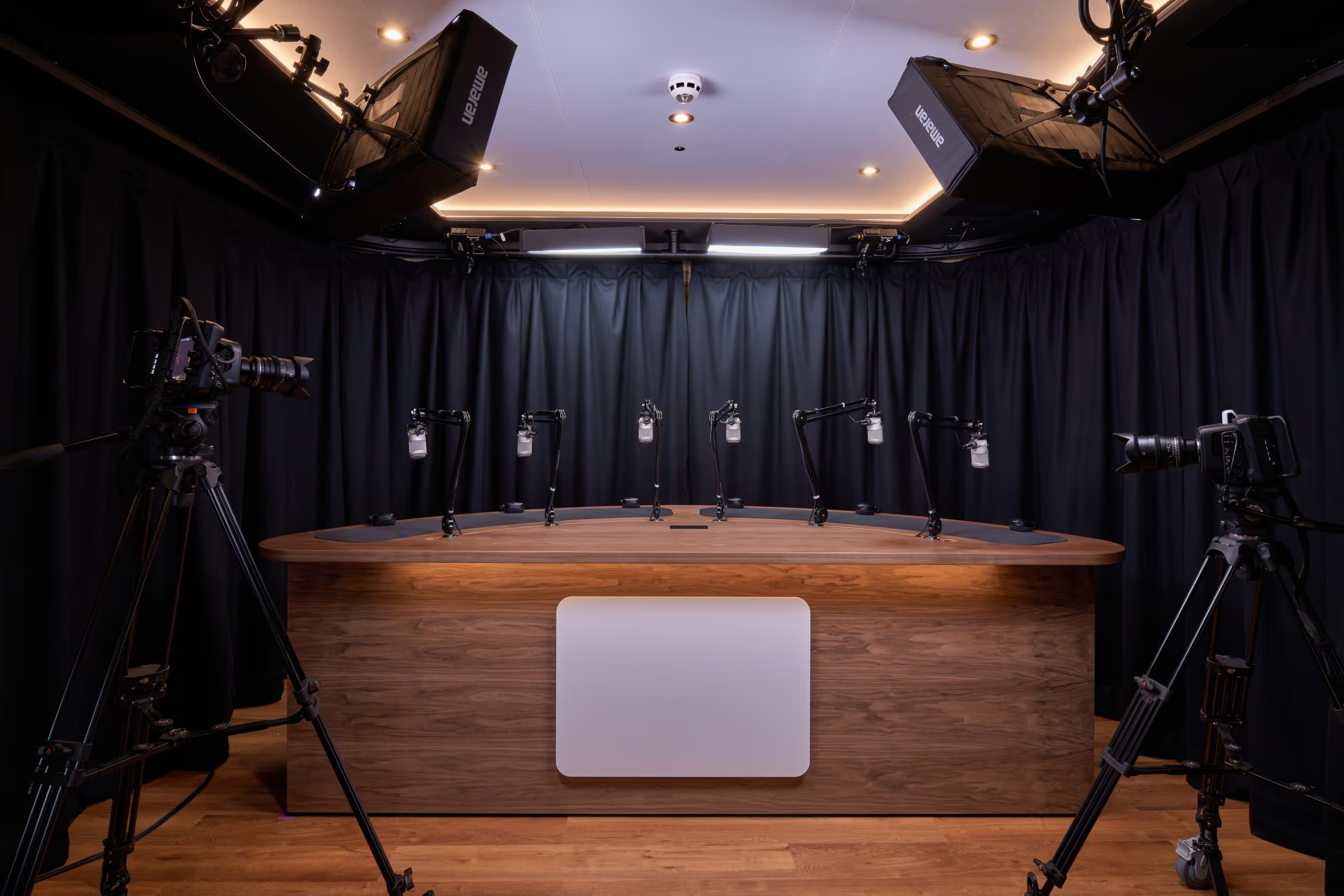
Podcasting is a journey. Whether you’re just starting out or refining your sound, every episode is a step forward. What matters most is staying consistent, connecting with your audience, and making your voice heard.
At TYX Studios, we’ve worked with some of the world’s top podcasters and creators. We also support teams producing brand podcasts that need consistent quality and a repeatable process.
Our London podcast studios are purpose-built for professional-quality audio and video, complete with acoustic treatment, industry-standard equipment, and on-site technical support. From solo recordings to remote interviews and multi-camera video podcasts, we help bring your vision to life.
Frequently Asked Questions
Yes, you can start podcasting without spending money. There are free tools like Audacity or GarageBand for editing, and platforms that let you publish your podcast online with basic bonus features. Just keep in mind that better results may need some upgrades over time, like sound treat options to improve your room acoustics.
At minimum, you’ll need a recording device (like a laptop or portable recorder), a podcast microphone (USB or XLR), and headphones. For better audio only setups, many podcasters use a local audio capture method, which records directly to their computer or interface for clearer sound. If you plan to record with guests, you may also need a mixer or multi-input interface.
Use a USB mic with built-in monitoring and record straight into a free DAW or recording software. To make editing easier, always record your own track separately. For solo shows, an audio only workflow keeps things simple and efficient.
Popular options include Audacity, Adobe Audition, Reaper, and Riverside.fm. Look for podcast recording software that supports local audio capture, multi-track recording, and export to podcast directories. If you plan to publish your podcast online, check whether the software integrates with hosting platforms.
It depends on your monetisation model. With ads, a podcast averaging 1000 listeners per episode might earn around £15 to £25 CPM (cost per mille). However, many podcasters also generate income through sponsorships, memberships, and bonus content.
For a more detailed insight, read our article on how many listeners you'll need to make money from your podcast.
We offer two packages, both with a technician included.
Studio 1: £340 for 2 hours (minimum)
£170 per extra hour
Studio 2: £200 for 2 hours (minimum)
£100 per extra hour
Consessions for half day and full day bookings. All prices exclude VAT.
TYX Members get up to 20% off all bookings. Reach out to learn more or to book your session.
.avif)
How to Make Money Podcasting in 2026
Real-world guide to podcast income in 2026. What to charge, when to start, and which platforms matter.
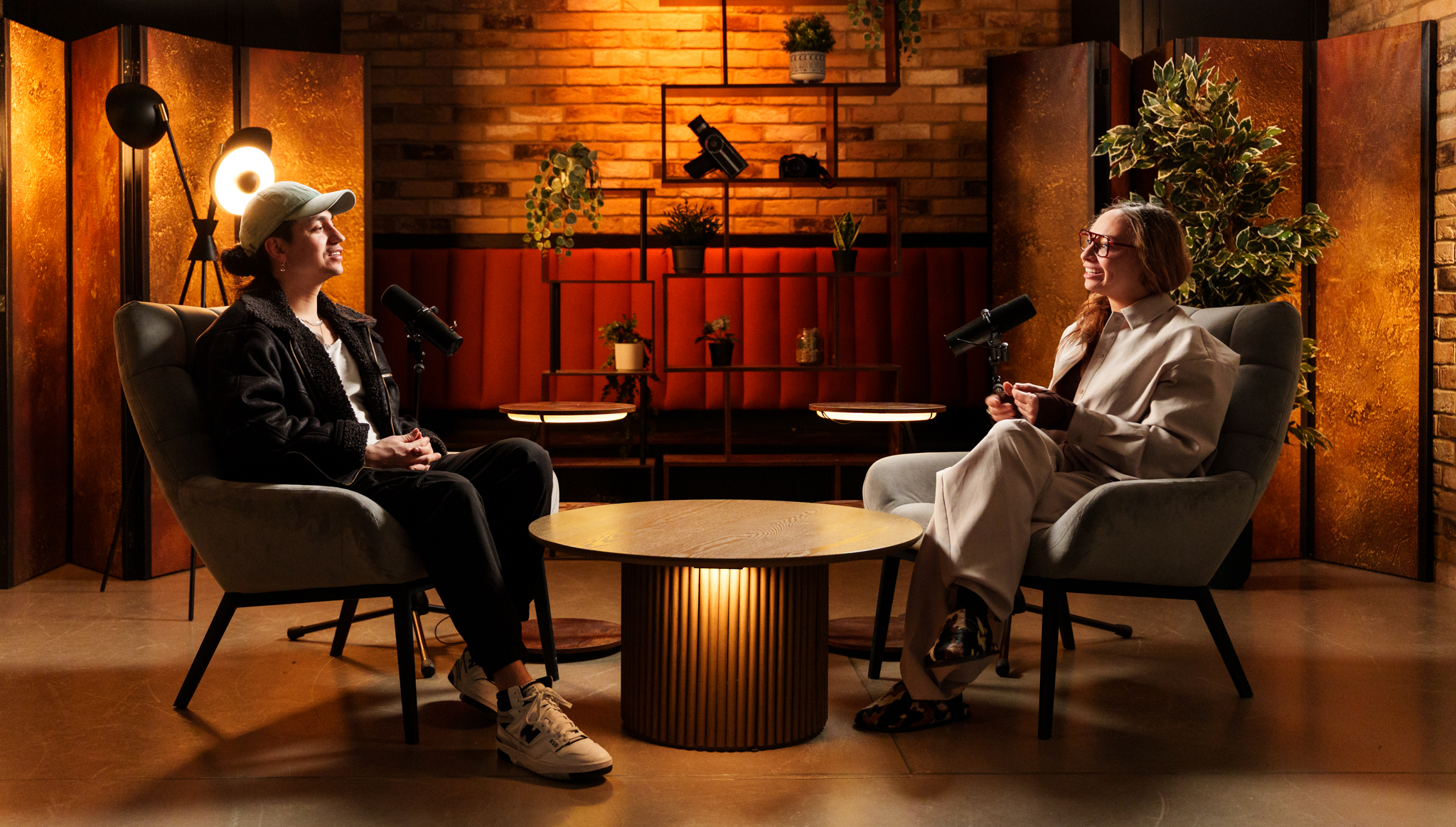
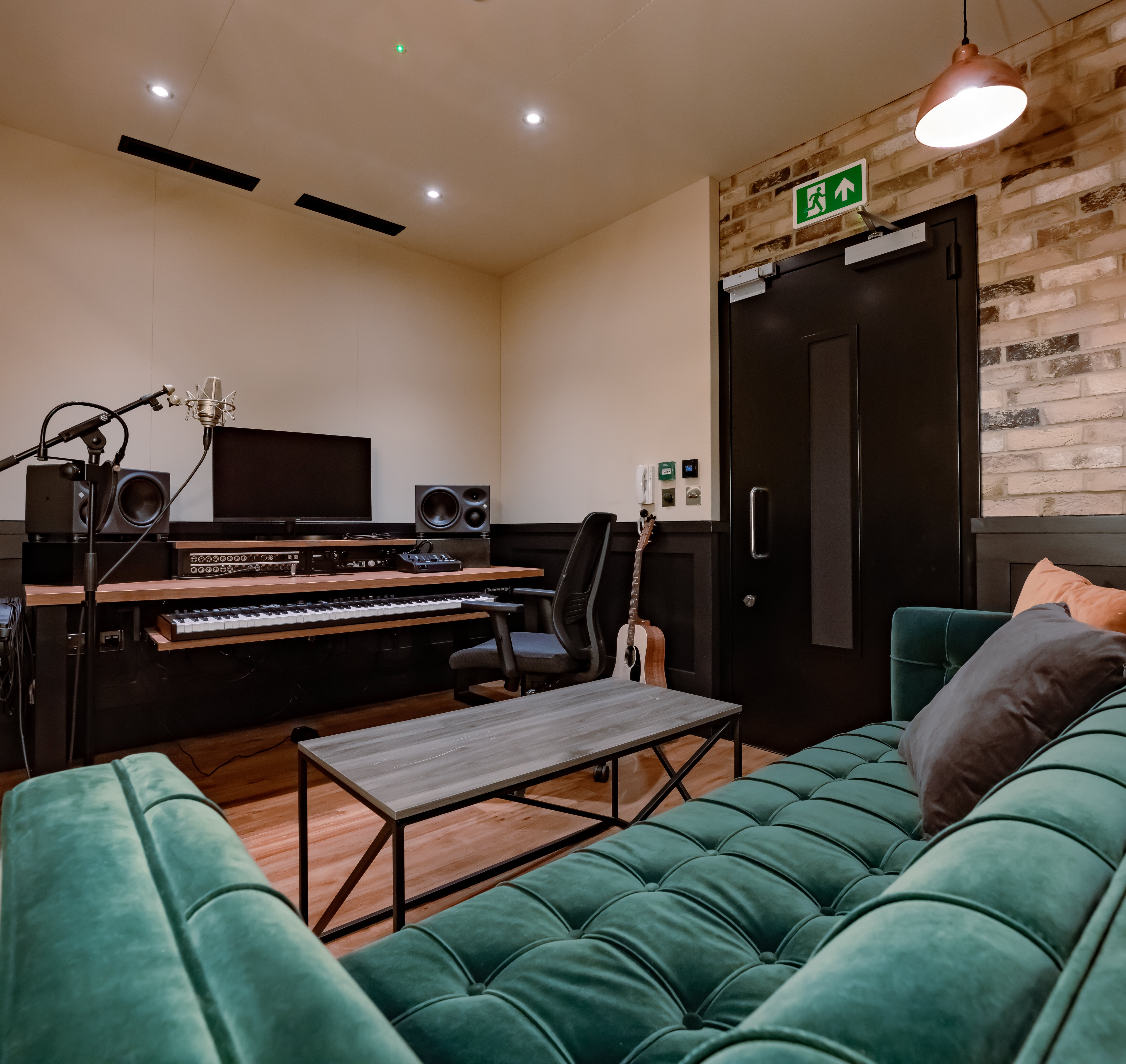













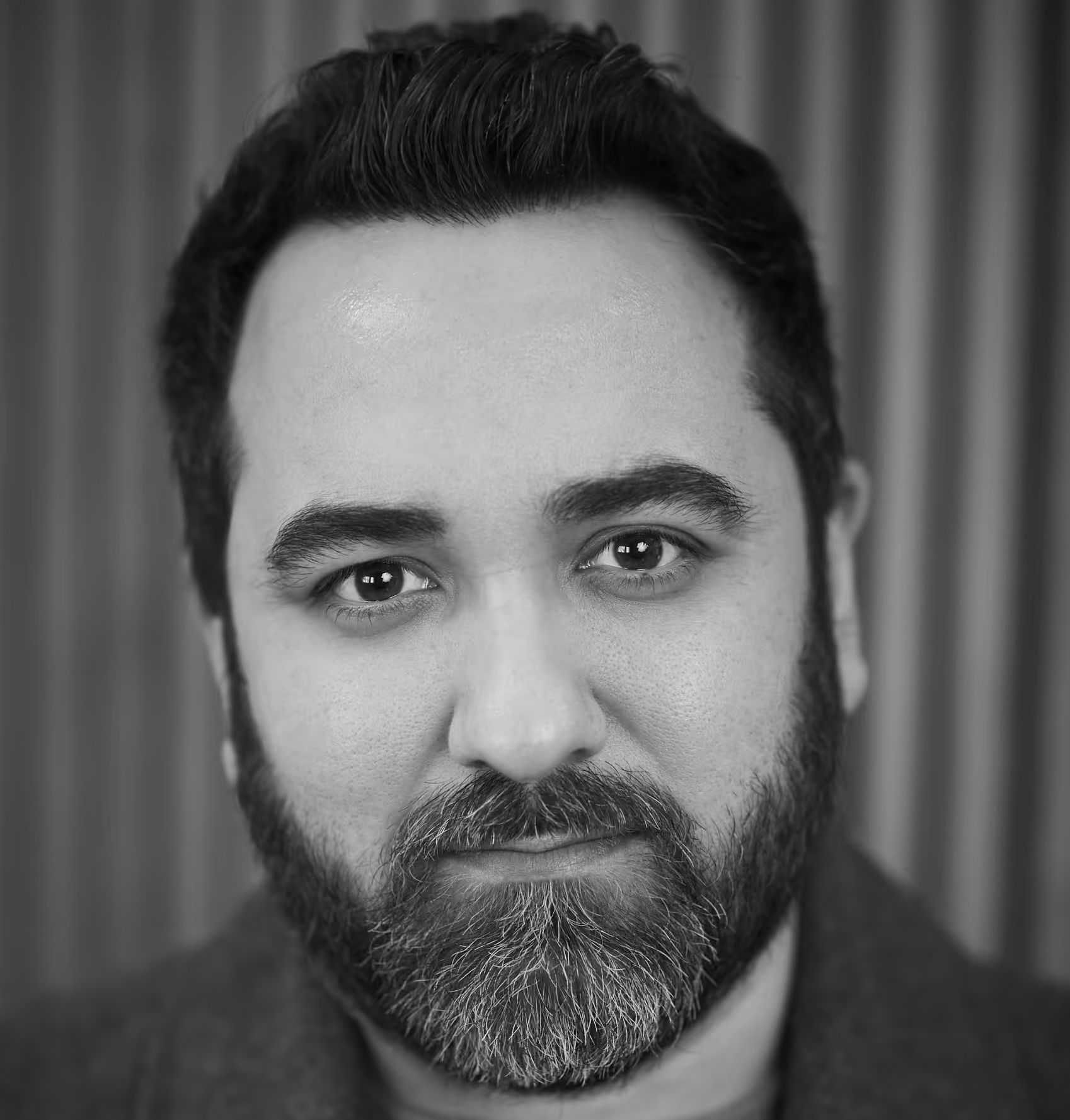
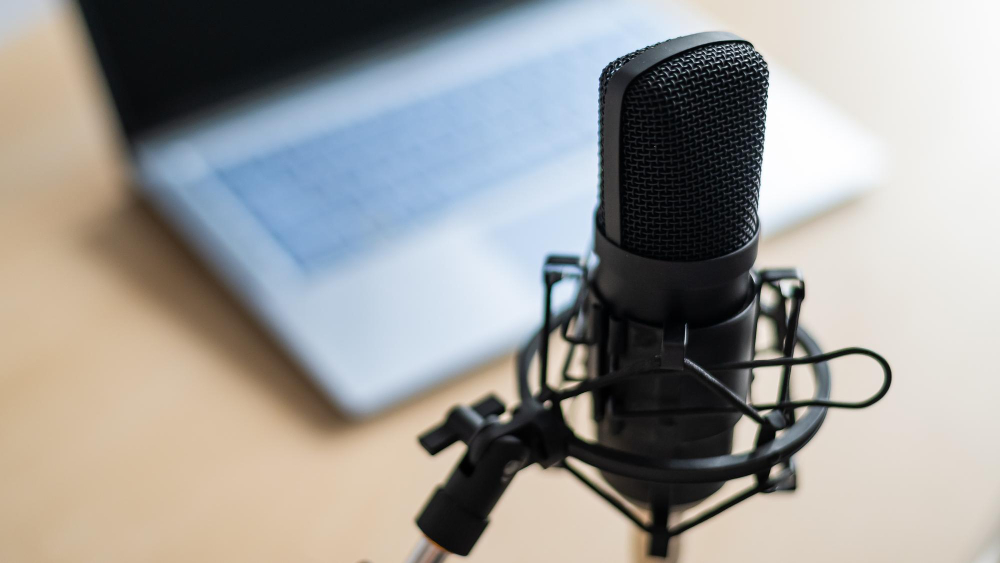
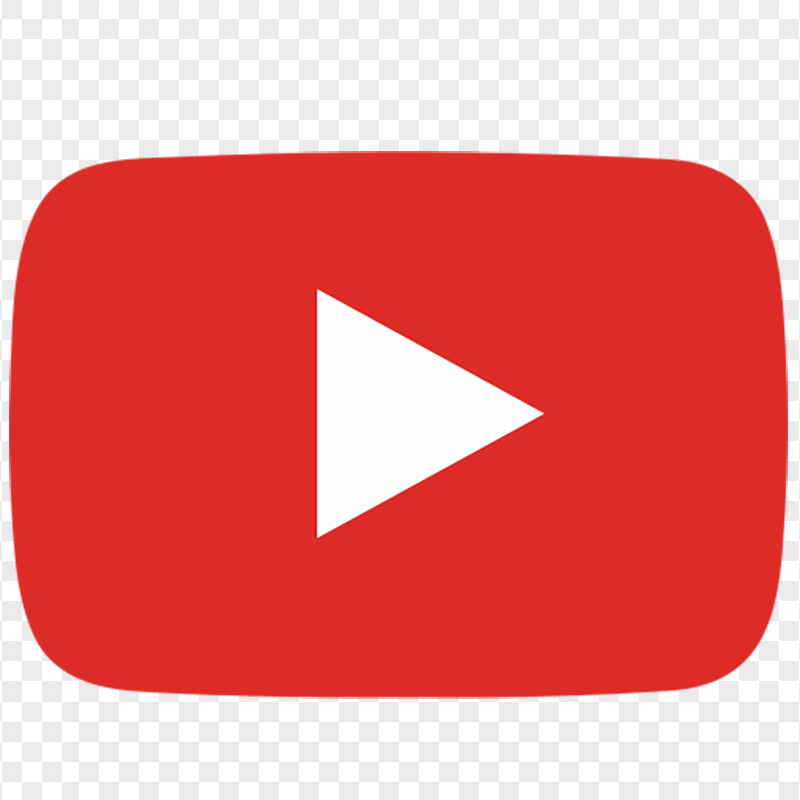
.jpg)